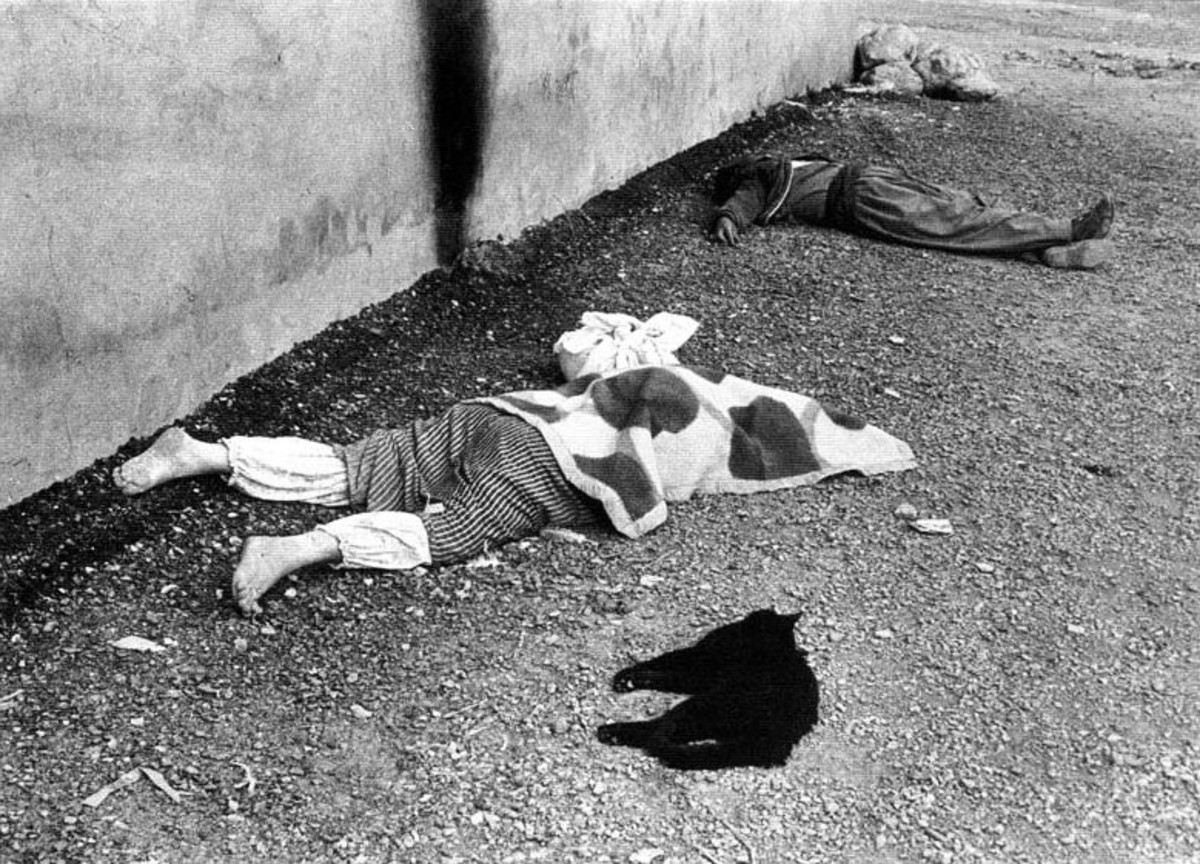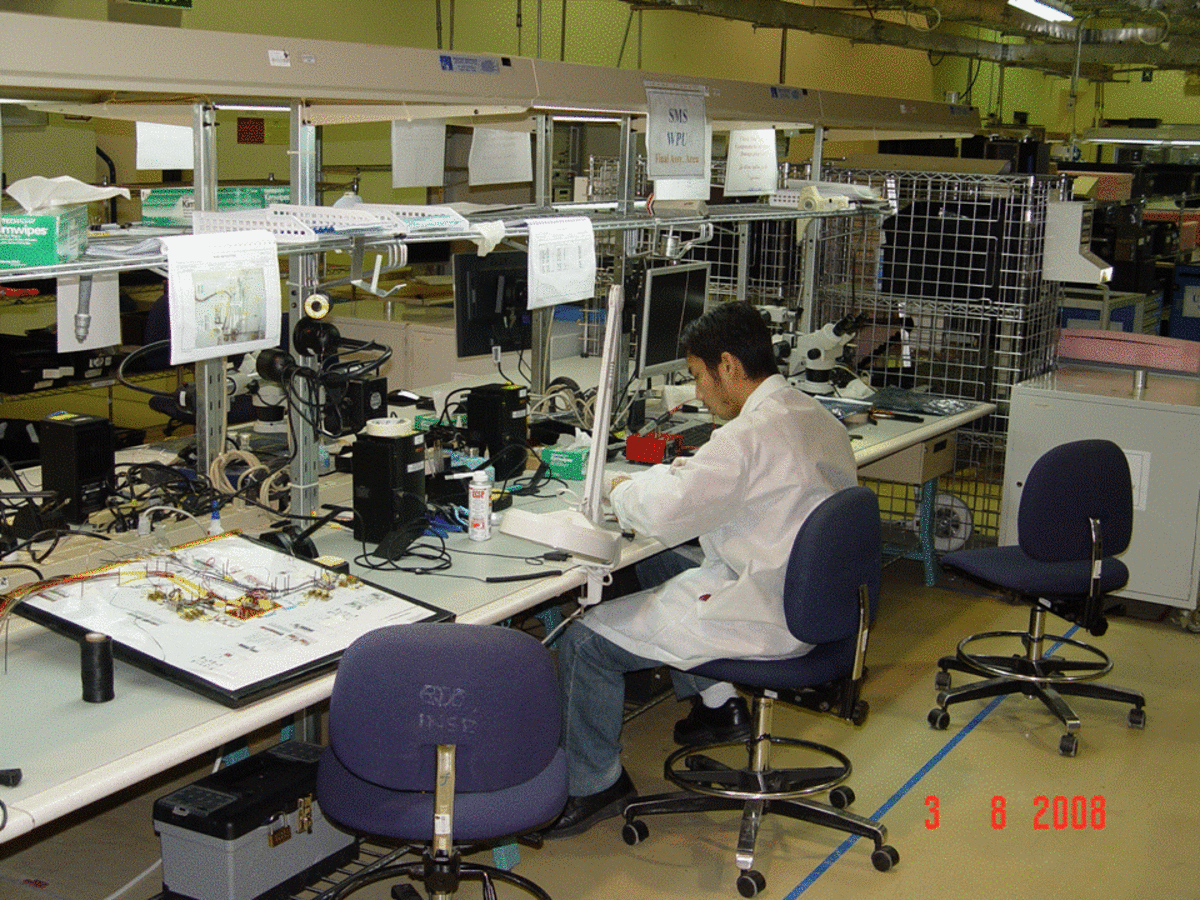The History of Saddam's Chemical Weapons
The Chemical Weapons Program
Iraqi interest in chemical weapons began as far back as the 1960's but received little interest until 1974 when a concerted effort was established with Saddam Hussein's son-in-law at the head of the program. In the mid-1960's Iraq established the Chemical Corps to protect troops and civilians from nuclear, biological, and chemical weapons. The Corps gained experience in chemical synthesizing and other skills to produce chemical warfare agents at laboratories in the early 1970's.
The Chemical Corps although legal under international laws allowed Iraq to establish the infrastructure and research necessary for a chemical weapons program and allowed Iraq to obtain the necessary materials from foreign sources without raising alarm. It was this ability to import the precursor chemicals as well as the production equipment and technical support that propelled Iraq's CW program.
In 1971 Iraq began testing a number of chemical agents at a small, well guarded site at Rashad, northeast of Baghdad. The agents researched included mustard gas, CS, and tabun. In 1974 Iraq established the organization “al-Hazan Ibn al-Haitham Institute” for the purpose of researching both chemical and biological weapons. In the late 1970's Iraq began planning for the construction of a large research and production facility 70km northwest of Baghdad. These plans were known as Project 922. This was the Muthanna State Establishment, or al-Muthanna, and operated as a front known as Iraq's State Establishment for Pesticide Production.
The site became operational in 1982-1983 with five research and development departments. The site quickly became the main chemical agent production facility while simultaneously leading the effort in weaponizing both chemical and biological agents as well as weapon development and testing alongside of military command. The facility was supported by three storage and precursor production facilities known as Fallujah 1, 2, and 3 located near Habbaniyah, northwest of Baghdad. Some of these facilities were destroyed in bombings during the first Gulf War before completion.
Lewisite Poster from WWII

Continued Production
Iraq was quickly able to begin producing 60 tons a year of sulfur mustard.i In 1981 production began at a plant near Syria capable of producing 1.7 million tons of phosphate annually.ii In 1983 Iraq produced 150 tons of mustard gas. Iraq began production of tabun and sarin in 1984, producing about 60 tons of tabun while the sarin was still in pilot-scale production.iii Between 1985 and 1990 Iraq constructed several facilities to produce nerve agent precursors.iv
By 1985 Iraq had a well established chemical weapons program capable of producing nerve agents, including tabun, sarin, and VX, with Iraqi supplies and no need for international help.v Sometime in the mid 1980's East German specialists constructed a large chemical warfare training center in order to train the Iraqi military in the effective delivery of Chemical weapons.vi Iraq extensively used artillery shells filled with chemical agents during the Iran-Iraq war. After several serious military defeats in 1981 and 1982 Iraq began to employ chemical weapons against Iran.
From a series of Iraqi declarations to the UN during the 1990s we know that by 1991 they had produced at least: 2,850 tonnes of mustard gas, 210 tonnes of tabun, 795 tonnes of sarin and cyclosarin, and 3.9 tonnes of VX. Iraq admitted to UNSCOM they had possession, prior to the FGW, of aerial bombs containing chemical agents including sulfur mustard, tabun, and sarin. Iraq declared they had produced over 125,000 munitions, filled and unfilled, intended for chemical agents.
The Enablers
In light of the misconception that America supplied the chemical weapons to Iraq I will list the suppliers of Iraq's chemical weapon program. While some supplies were obtained from American organizations and corporations America was far from the lead supplier. The Iraqi WMD program was the entire worlds fault. The information in this list was compiled by The Wisconsin Project On Nuclear Arms Control. Additional and concurring information can also be found in Iraq's own 1,200 page weapons declaration published in December of 2002.
-
Germany: Up to 52% of Iraq's chemical weapon equipment was of German origin. German Companies helped build chemical weapon facilities such as laboratories, bunkers, and administrative buildings culminating in the construction of a production facility in the early 1980's disguised as a pesticide plantvii. German firms supplied the precursors for mustard gas, sarin, tabun, and tear gases totaling 1,027 tons. This allowed Iraq to produce, in 1984 to 1985, 150 tons of mustard gas and 60 tons of tabun.
-
In addition France supplied technologically advanced materials such as glass-lined reactors, vessels, tanks, and columns for use in the production of chemical weapons. In all 21% of Iraq's chemical weapons equipment was of French origin.
-
Italy: The Iraqi arsenal contained 75,000 shells designed for chemical weapons which were obtained from Italy.
-
At least 100 tons of mustard gas precursor were supplied by Brazil.
-
The United Kingdom paid for the construction of a chlorine factory that was actually intended to produce mustard gasviii. In 1982 British sources supplied 76 chemical protection suits.ix
-
Singapore provided 4,515 tons of chemical precursors for chemical weapons such as VX, sarin, tabun, and mustard gas. A firm, located in Singapore and affiliated to the United Arab Emirates, supplied more than 4,500 tons of VX, Mustard, and Sarin gas precursors as well as production equipment to Iraq.
-
The Dutch supplied 4,261 tons of precursors for mustard, sarin, tabun, and tear gases to Iraq. Another Dutch company legally exported over 1200 tons of chloroethyl, dimethylamine, thiodiglycol, and 20,000 kg of phosphorous trichloride, chemicals used in the production of CW's.x
-
Egypt supplied 2,400 tons of tabun and sarin precursors to Iraq and 28,500 tons of weapons designed for carrying chemical munitions. “Iraq signs a secret agreement with Egypt, under which Iraq reportedly gives Egypt $12 million to expand its CW capabilities. In return Iraq would assist Egypt with production and storage of CW agents, establishing chemical manufacturing facilities and help purchase raw materials for the production of CW agents.”xi
-
India, 2,343 tons of precursors to VX, tabun, Sarin, and mustard gases. An Indian company, formerly Exomet Plastics, sent 2,292 tons of precursor chemicals to Iraq.
-
Luxembourg supplied Iraq with 650 tons of mustard gas precursors.
-
Spain supplied Iraq with 57,500 munitions designed for carrying chemical weapons. Spain also provided reactors, condensers, columns and tanks for use in Iraq’s chemical weapons program.
-
China provided 45,000 munitions designed for chemical weapons.
-
AL HADDAD ENTERPRISES, INC, a now defunct business operated by a naturalized Iraqi born immigrant based in Tennessee supplied Iraq with 60 tons of DMMP, a chemical used to produce sarin gas. This same company also attempted to export 1,100 pounds of potassium fluoride which is used in the production of nerve gas to Iraq, although this shipment was intercepted and seized.xii This company is sometimes used to promote the idea that America supplied Iraq's CW, this is a distortion. The company was clearly an Iraqi front company covertly operating to aid Iraq's CW program. According to the New York Times the former owner, Al-Haddad, was arrested in Bulgaria while attempting to arrange an arms sale to Iraq.
-
“Alcolac International Inc., a U.S. company, violated U.S. export laws by selling thiodiglycol, a major ingredient in mustard gas, to Iraq. Alcolac pleaded guilty to this violation in 1989.”xiii This same material was also sold to Iran. Alcolac is currently being sued along with several dozen other companies by 3,500 Gulf War vets that suffer from Gulf War Syndrome.
-
EVAPCO, supplied ion-exchange equipment for use in Iraq’s chemical weapons program.xiv
-
Other nations that aided Iraq's CWP included Austria, Canada, and Belgium.
Is the threat of chemical warfare still relevant?
U.S. Chemical Weapons Stockpile

Russian Chemical Weapons Stockpile

Sources
iW. Seth Carus, "The Genie Unleashed: Iraq's Chemical and Biological Weapons Production," Policy paper No. 14, Washington Institute for Near East Policy, July 1989.
iiBureau of Mines, U.S. Department of the Interior, Phosphate Availability: A Minerals Availability Appraisal, Information Circular 9187 (Washington: Government Printing Office, 1988), p. 37.; Middle East Economic Digest, 11 April, 1987, p. 13., Middle East Economic Digest, 27 May 1988, p. 13.
iiiNuclear Threat Initiative, www.nti.org, Chemical Weapons Programs- Iraq special Weapons Facilities", Federation of American Scientists' .
ivNuclear Threat Initiative, www.nti.org, UNSCOM Report to the Security Council, 25 January 1999, Annex B: Status of Verification of Iraq's Chemical Weapons Program.
vNuclear Threat Initiative, www.nti.org, Victor A. Utgoff, The Challenge of Chemical Weapons: An American Perspective, (New York: St. Matin's Press, 1991), p. 83.
viNuclear Threat Initiative, www.nti.org, Adel Darwish and Gregory Alexander, Unholy Babylon: The Secret History of Saddam's War, (London: Victor Gollancz Ltd., 1991), p. 111.
viiMcGee, Maggie. “We Have Surprises”, Der Spiegel, October 10, 1990, pp. 1148-152.
viiiBritain's Dirty Secret, The Guardian, March 6, 2003.
ixNuclear Threat Initiative, www.nti.org, Appendices to the "Report of the Inquiry into the Export of Defence Equipment and Dual-Use Goods to Iraq and Related Prosecutions" laid before The House on 15 February 1996, Volume One, Section D, "Arms and Defence-Related Exports to Iraq", Chapter 2 Applications of The Guidelines in the period December 1984 to August 1988.
xNuclear Threat Initiative, www.nti.org, Adel Darwish and Gregory Alexander, Unholy Babylon: The Secret History of Saddam's War, (London: Victor Gollancz Ltd., 1991), p. 106.
xiNuclear Threat Initiative, www.nti.org, Dany Shoham," Chemical and Biological Weapons in Egypt," Nonproliferation Review, Vol. 5, No. 3 (Spring-Summer 1998), p. 51.
xiiJim Crogan, Made in the USA, LA Weekly News, 2003.
xiiiNuclear Threat Initiative, www.nti.org, Tom Toolen, "N.J. Man Accused of Poison Gas Role; Crackdown on Illegal Exports," Los Angeles Times News Service, 31 January 1989.
xiv Made In the USA, Part III: US Company Listings A-M, By Jim Crogan, 2003, http://www.laweekly.com.
© 2016 Lloyd Busch









